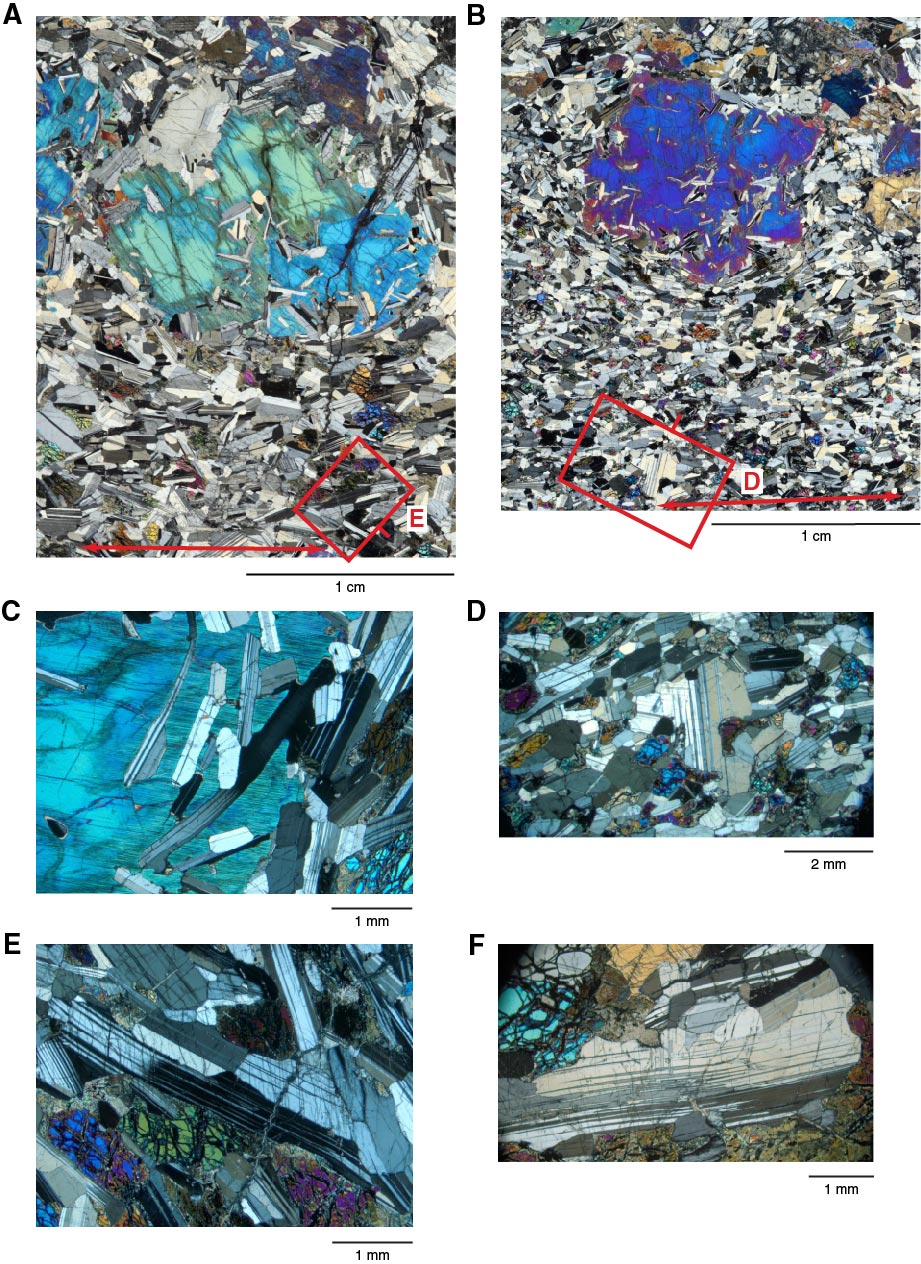
Figure F66. Clinopyroxene oikocrysts (under crossed polars). A. Clinopyroxene oikocryst-bearing troctolite (Sample 345-U1415J-5R-1, 117–121 cm [Piece 7B]). Strong olivine-plagioclase magmatic foliation (red arrow) within the relatively fine grained (1–3 mm) troctolitic portion of the rock wraps around the right side and bottom of the oikocryst. Red box (tick mark shows upward direction) indicates location and orientation of image in E. B. Clinopyroxene oikocryst developed in olivine gabbro at troctolite margin (Sample 345-U1415J-7G-1, 28–31 cm [Piece 5]). Strong olivine-plagioclase magmatic foliation (red arrow) within the relatively fine grained (1–3 mm) troctolitic portion of the rock wraps around the bottom of the oikocryst. Red box indicates location and orientation of image in D. C. Large clinopyroxene oikocryst margins, just outside the field of view in A, clearly showing two bent elongate plagioclase crystals within the oikocryst. D. Relatively unstrained, large 2–3 mm long plagioclase crystal almost perpendicular to the olivine-plagioclase magmatic foliation. E. Large (7 mm long), elongate plagioclase crystal within the olivine-plagioclase foliation showing sigmoidal bending, deformation twins, and subgrains. F. Area just outside the field of view in B with a large (6 mm long) plagioclase crystal with deformation twins. Also seen are small (<1 mm) plagioclase crystals immediately adjacent to and within the margins of the large bent plagioclase crystal, illustrating how parts of the plagioclase network of crystals are commonly annealed and strain free.

Previous | Close | Next | Top of page